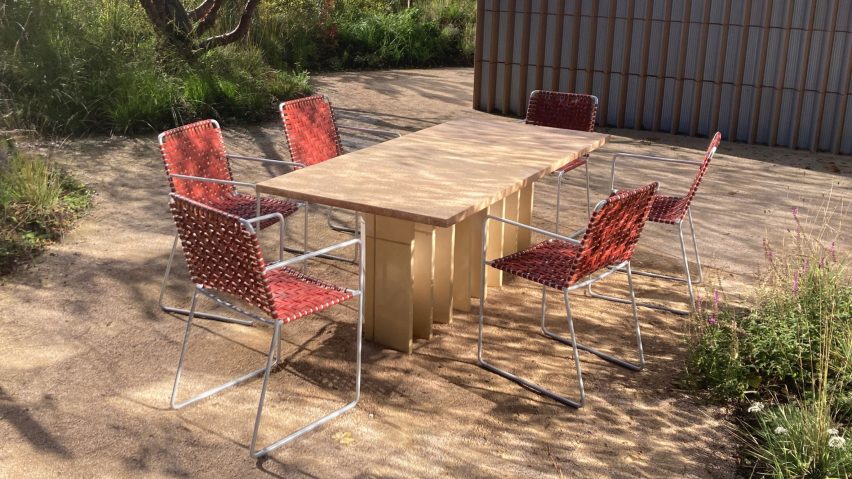
Waste firehoses turned into "tactile and playful" outdoor furniture for Maggie's Southampton
British practice Local Works Studio has developed a range of outdoor furnishings for the Amanda Levete-designed Maggie's Centre in Southampton using reclaimed waste materials from the building's construction, as well as from the local area.
Damaged and surplus terracotta blocks, left over from creating the distinctive ceramic facade of the cancer care centre, were combined with excess gravel from the surrounding garden paths to form a large, communal table and three benches.
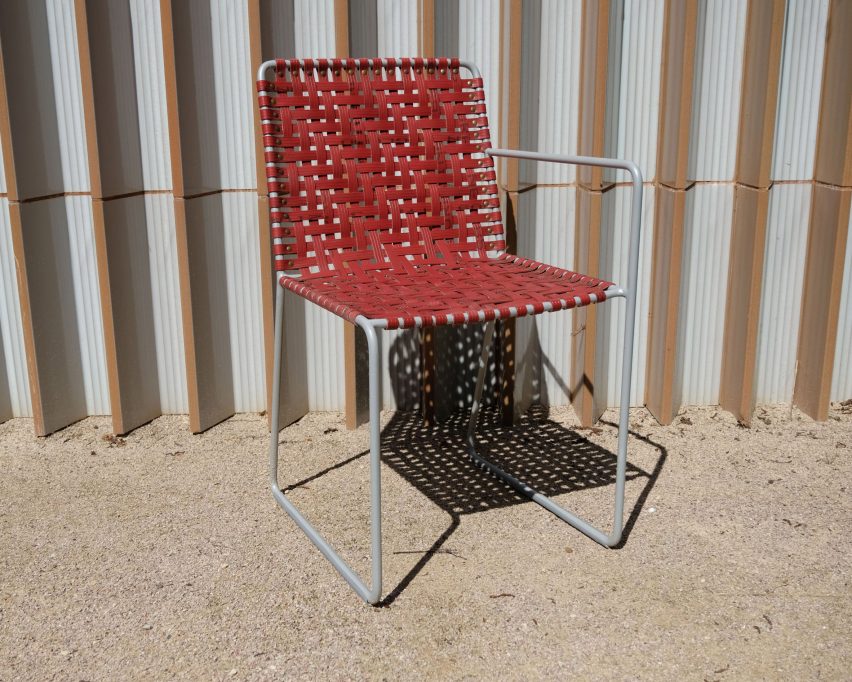
These are accompanied by steel-framed lounge and dining chairs, with woven seats made using decommissioned hoses from a nearby fire station.
The result is a "tactile and playful" outdoor furniture collection that is "very low carbon", makes use of abundant local waste streams and blends in seamlessly with its surroundings, according to Local Works Studio.
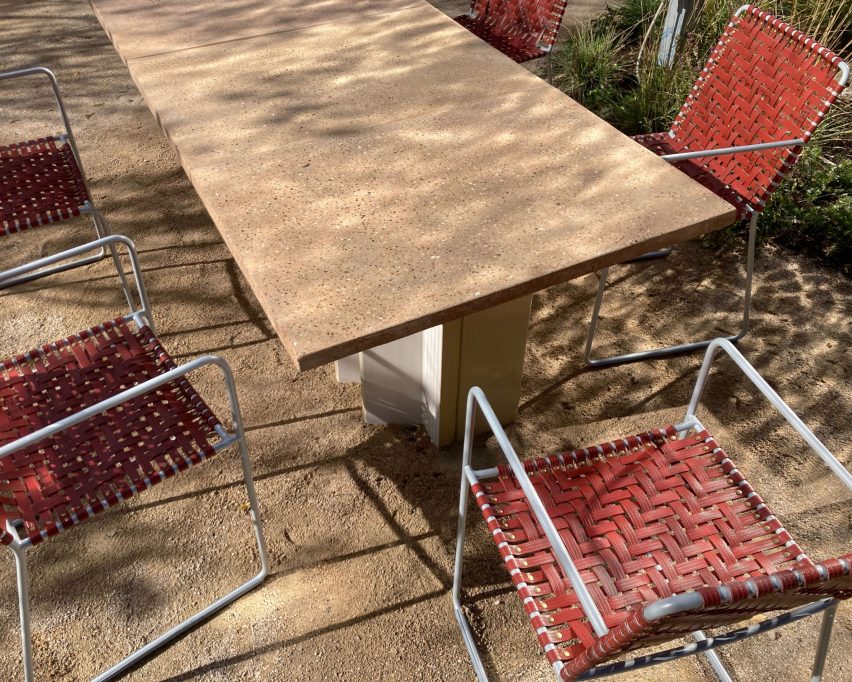
"The furniture is in harmony with the buildings and garden because it is literally made from the same material palette," the studio told Dezeen.
"People who sit in the chairs and touch the surfaces can 'read' the story of the furniture and understand where the materials came from. This connection to place and the playful character of the furniture is a powerful antidote to the usual impersonal, sterile environment of a hospital."
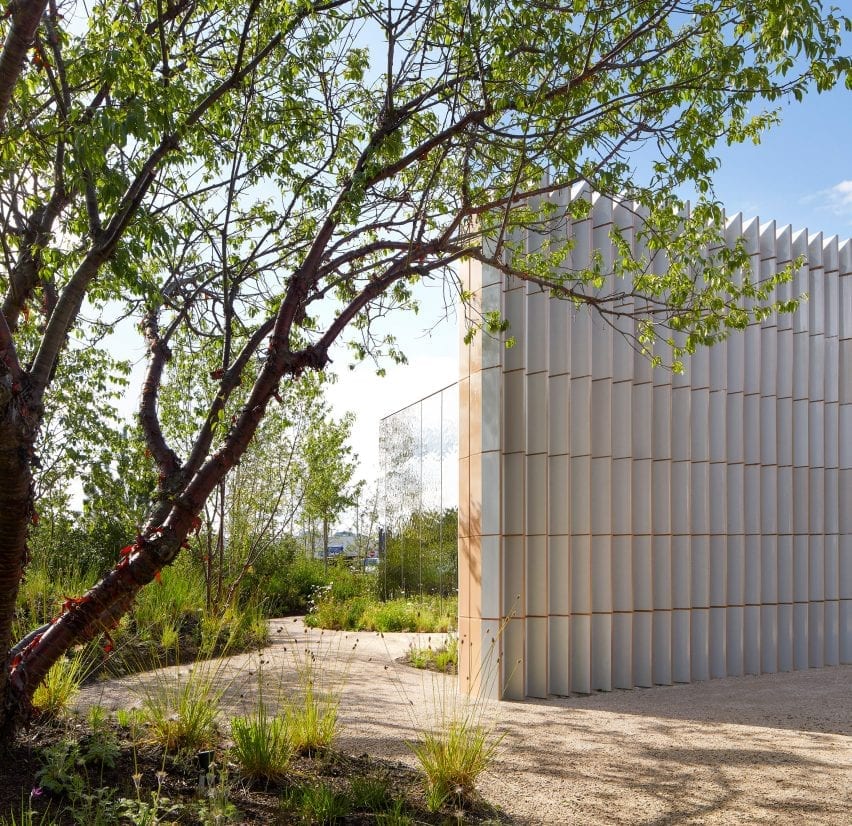
Local Works Studio, which is run by landscape architect Loretta Bosence and conservator Ben Bosence, began the design process by mapping and collecting the various waste materials they could find on the building site and in the local community around Southampton General Hospital.
The pale terracotta blocks, designed especially for Maggie's Southampton by Levete's studio AL_A and Catalan ceramics workshop Ceramica Cumella, became the main starting point for the project.
"They are beautiful, strong and perfectly suited for external use," Ben Bosence explained. "We prototyped various different ways of using them, but quickly decided they were perfect for plinths and bench legs."
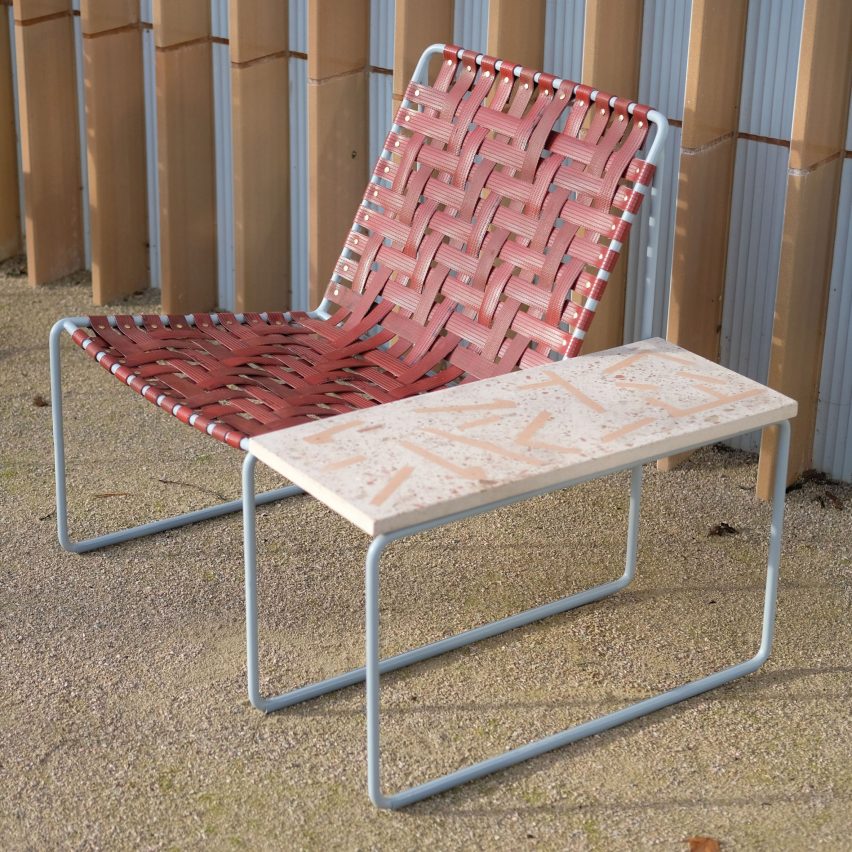
Elsewhere, the unused terracotta was crushed up into small shards and mixed with limestone gravel from Maggie's gardens to create a speckled terrazzo-style material used to form bench seats and table tops.
This is held together by ground granulated blast-furnace slag (GGBS) – a waste byproduct from the steel-making industry that acts as a low-carbon binder and reduces the need for emissions-intensive cement.
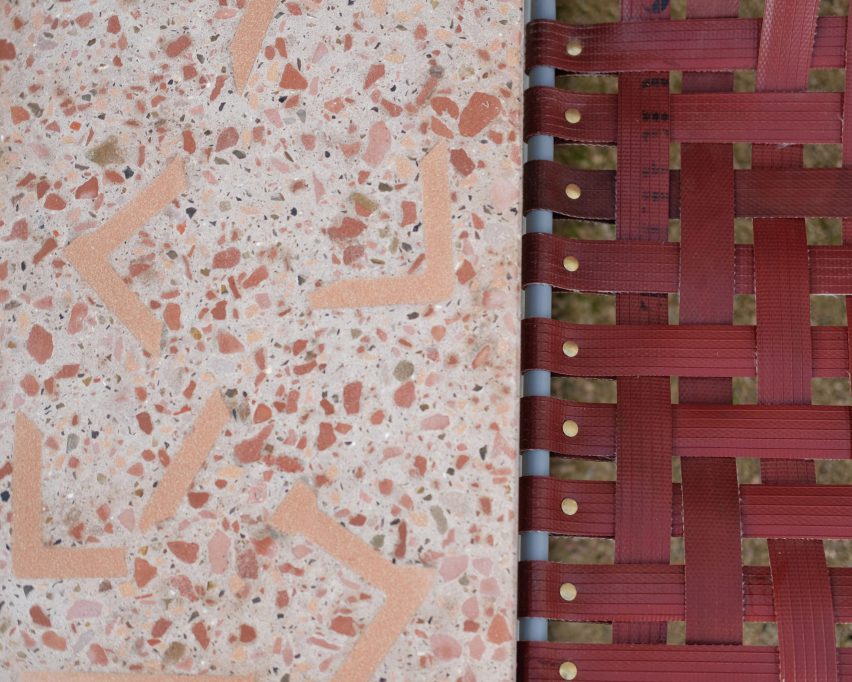
"The table and bench tops are made using 100 per cent waste aggregates from the site, mixed with a UK waste-based binder and a small amount of cement," Bosence said.
"The material was designed, prototyped and made by us to be a strong, beautiful and cast-able mix that is 95 per cent waste."
Any leftovers of this mix were cast into large tiles to form paved thresholds for the building's entrances.
For the chairs, Local Works Studio needed a more flexible material that could create comfortable places for cancer patients and their guests to sit amongst the building's wild gardens, designed by Sarah Price Landscapes.
Discarded firehoses from the nearby Hampshire Fire Service HQ presented themselves as the best solution, being both highly durable, weather-resistant and abundant since the hoses have to be routinely replaced every ten years regardless of condition.
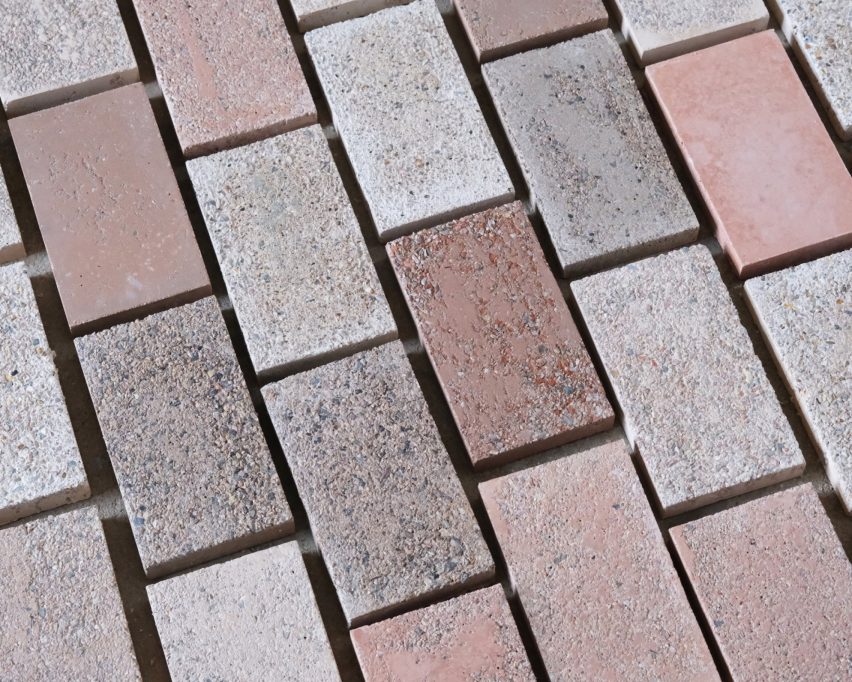
Strips of the material were woven onto a simple steel frame using a technique known as twill weaving, which creates a robust pattern of parallel ribs that is also used to form jeans and carbon fibre sheets.
"The strips of hose textile are fixed in place with brass fixings that allow for easy dismantling and maintenance," Bosence said.
The chairs themselves come in three variations, including a low-slung lounger with an integrated side table, a simple dining chair and a version with one armrest to provide easier access for people with restricted mobility.
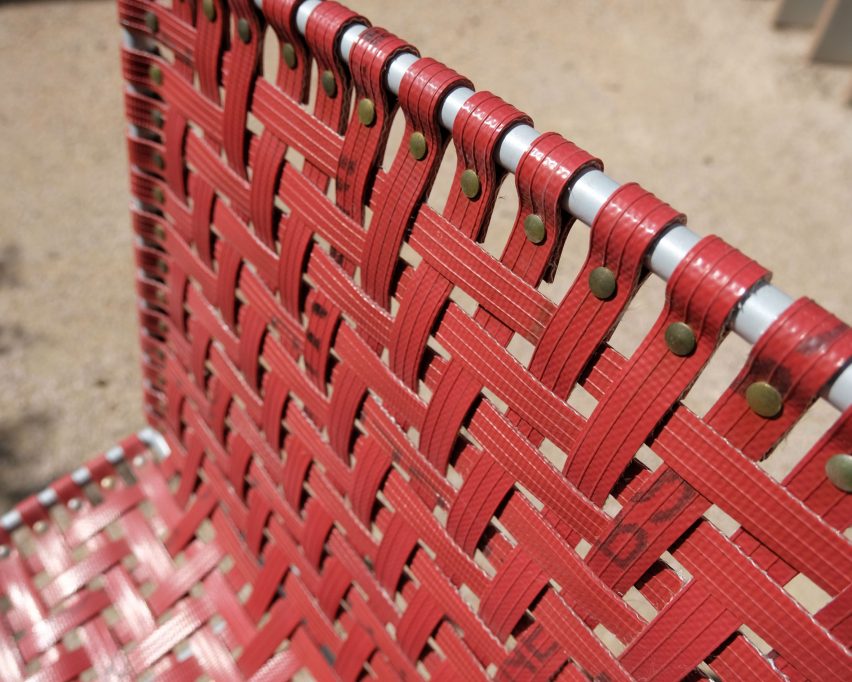
The frames were manufactured by Making it Out – a Brighton charity that provides structured occupational support to people who have recently left prison or are at risk of being incarcerated.
Local Works Studio has not yet conducted a lifecycle assessment of the collection, so it is unclear to what extent the furniture's emissions-intensive steel components counteract the studio's carbon claims.
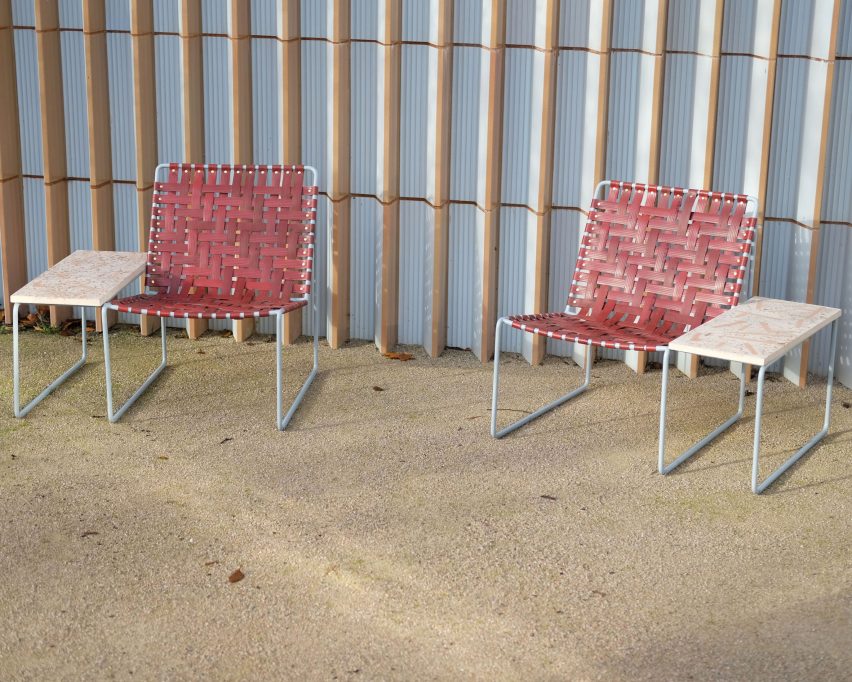
Other furniture collections that have made use of local waste materials include Blink, a seating system designed by Richard Hutten for Amsterdam's Schiphol airport using the building's old chairs.
Elsewhere, Carolina Härdh has crafted furniture for Gothenburg restaurant Vrå from its own food waste.